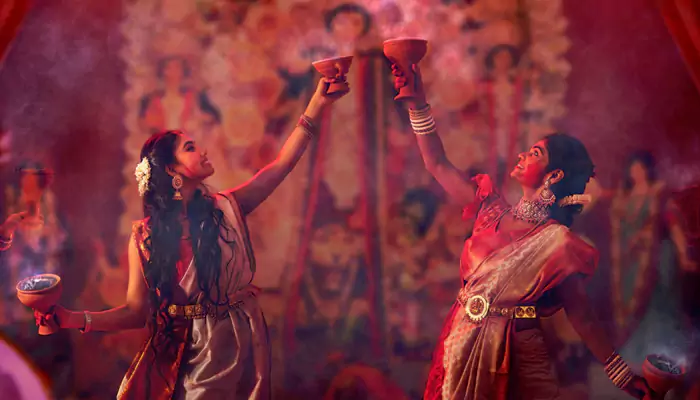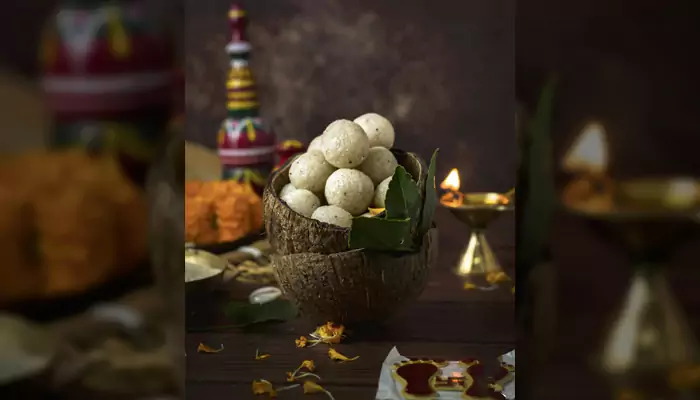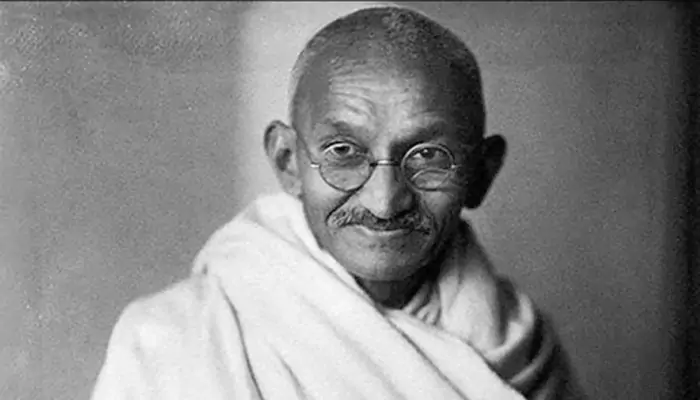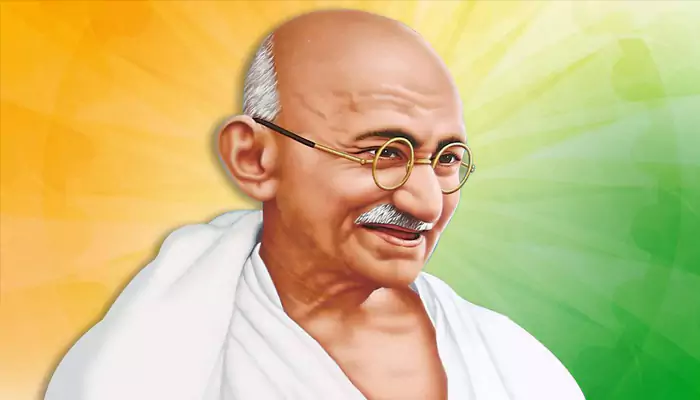A Spotlight on Karwachauth Aesthetics: Red, Gold, Moonlight - A Visual Grammar for the Festival
- Devyani
- 2 months ago
- 4 minutes read
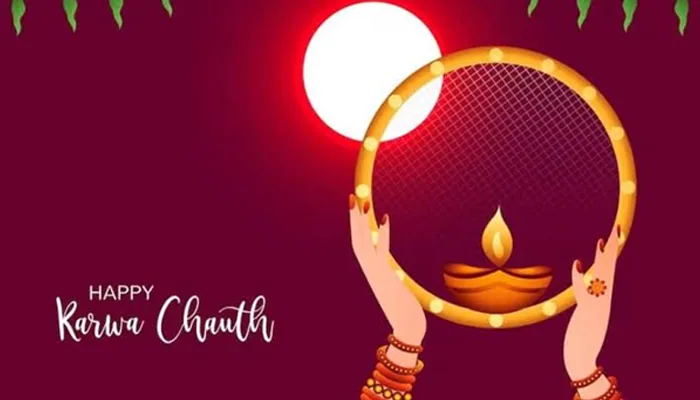
Beyond the fast, there's a feast for the eyes. Let's unravel the beautiful visual code of red, gold, and moonlight that makes Karwachauth so spellbinding.
So, you’re getting ready for Karwachauth, or maybe you’re just curious about all the gorgeous photos flooding your feed. Ever notice how a specific colour scheme just screams Karwachauth? It’s not a coincidence. The festival has its own visual grammar, a kind of unspoken style guide that’s as rich in meaning as the fast itself.
At the heart of it all are two powerhouse colours: red and gold. Think about it. From the sindoor in the hair parting to the choora (those gorgeous red and white bangles) on the wrists, and the quintessential red or maroon sari - red is the undisputed star. But why? Red isn't just a colour here; it's a symbol. It represents prosperity, passion, and the sacred bond of marriage. It’s the colour of a powerful, life-giving energy. Wearing it is like wearing your prayer for your husband’s well-being on your sleeve. Literally.
And then there’s gold. Oh, the gold! From intricate jewellery adorning the neck, ears, and nose to the zari work woven into the fabric, gold is more than just bling. In this context, it’s a symbol of Lakshmi, the goddess of wealth and good fortune. It represents not just material wealth, but the light, purity, and timelessness of the marital bond. Together, red and gold create a visual harmony that is both regal and deeply auspicious. It’s a colour combo that says, “My marriage is my greatest treasure.”
(@kumudkundanmakeover/Instagram)
The Supporting Cast: More Than Just Accessories
But the magic doesn’t stop with the colours. The entire ensemble tells a story. Let’s talk about the mehendi. Those intricate patterns aren’t just for beauty. Folk traditions suggest that the darker the mehendi stains, the deeper the love between the couple. It’s also considered a shagun, a good omen, symbolizing the blessings of the goddess. Applying it is a social event, a prelude to the main day filled with laughter and anticipation.
(@shegaliashiwal/Instagram)
And we can’t forget the sound, can we? The gentle clinking of glass bangles, especially the ones from the choora set, is the soundtrack of Karwachauth. It’s believed that this tinkling sound wards off negative energies. Every element, you see, is layered with intention.
The Grand Finale: The Moon, Our Cosmic Neighbour
After a day of fasting and prayer, the entire aesthetic journey builds up to one moment: the sighting of the moon. This is where the third, and most crucial, element of our visual grammar comes in – moonlight.
(@1_miss_you_love/Instagram)
Picture this: the day-long visual feast of vibrant reds and shimmering golds is now bathed in the soft, silvery glow of the moon. It’s a breathtaking contrast. The moon isn't just a celestial body to be looked at; it’s the divine witness to the fast. The gentle moonlight falling on the puja thali, and then on the husband’s face through the sieve, is the final, sacred filter. It’s a moment of pure, ethereal beauty. That cool, serene light feels like a cosmic approval stamp on the day’s devotion. It transforms the vibrant energy of the day into a moment of calm, profound connection.
So, the next time you see the stunning visuals of Karwachauth, you’ll see more than just pretty pictures. You’ll see a beautiful language of love and devotion, spoken in the bold hues of red, the shimmer of gold, and the gentle, hopeful glow of the moonlight. It’s a grammar of the heart, and honestly, it’s one of the most beautiful languages in the world.

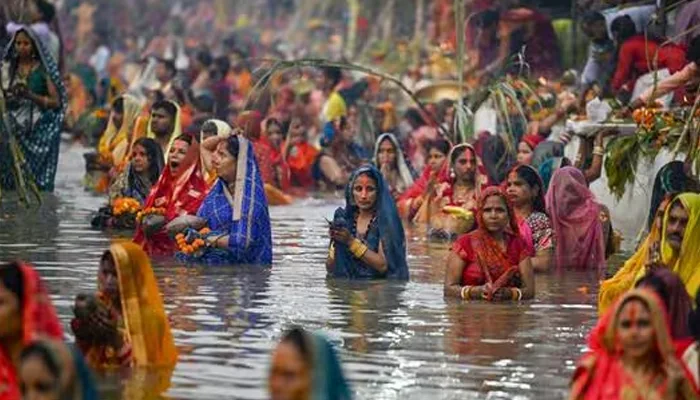
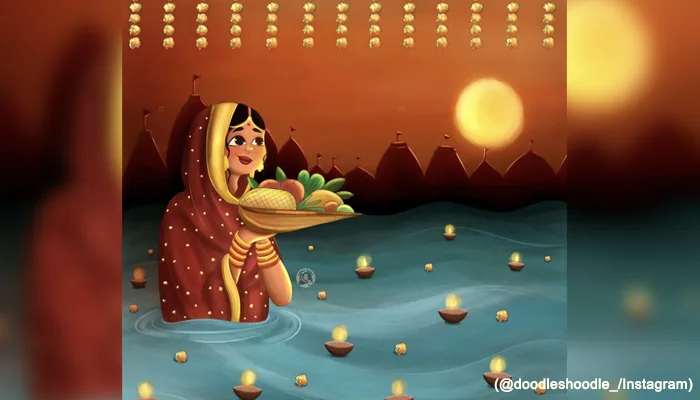
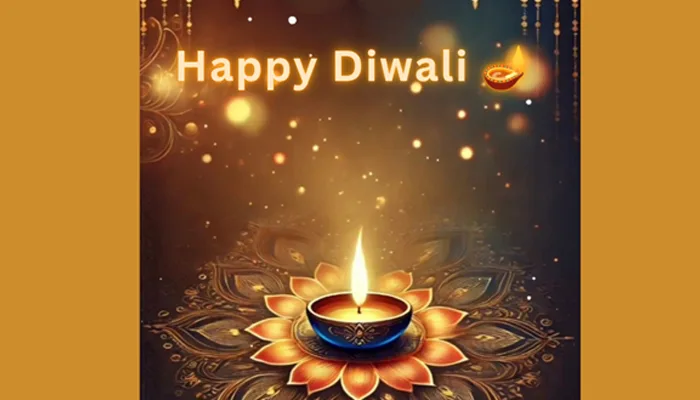
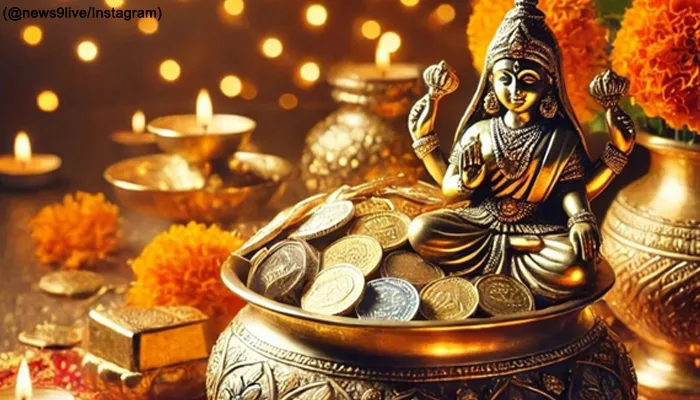
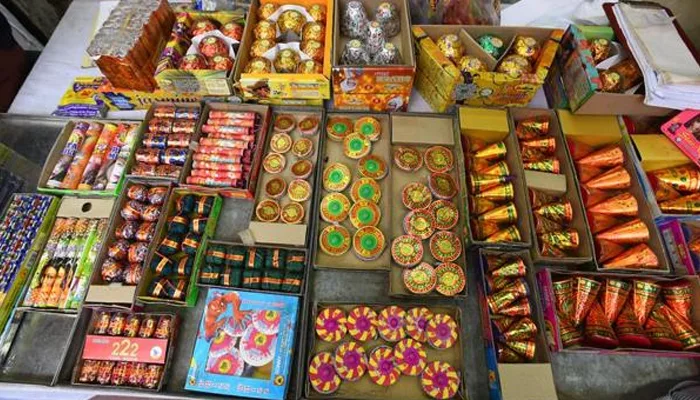
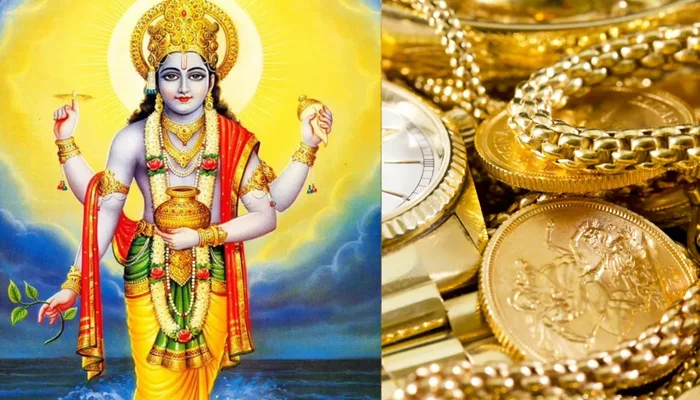
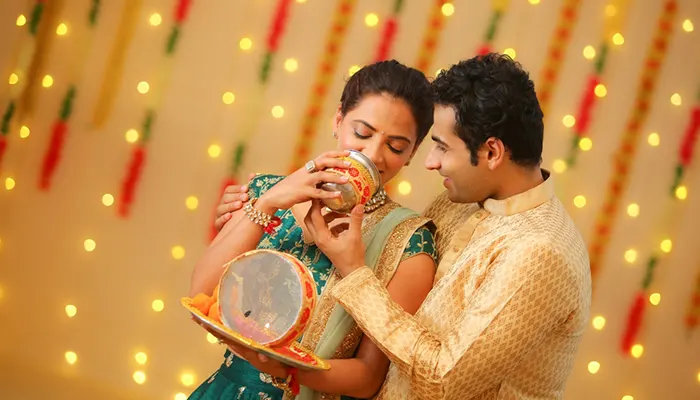
.webp)
